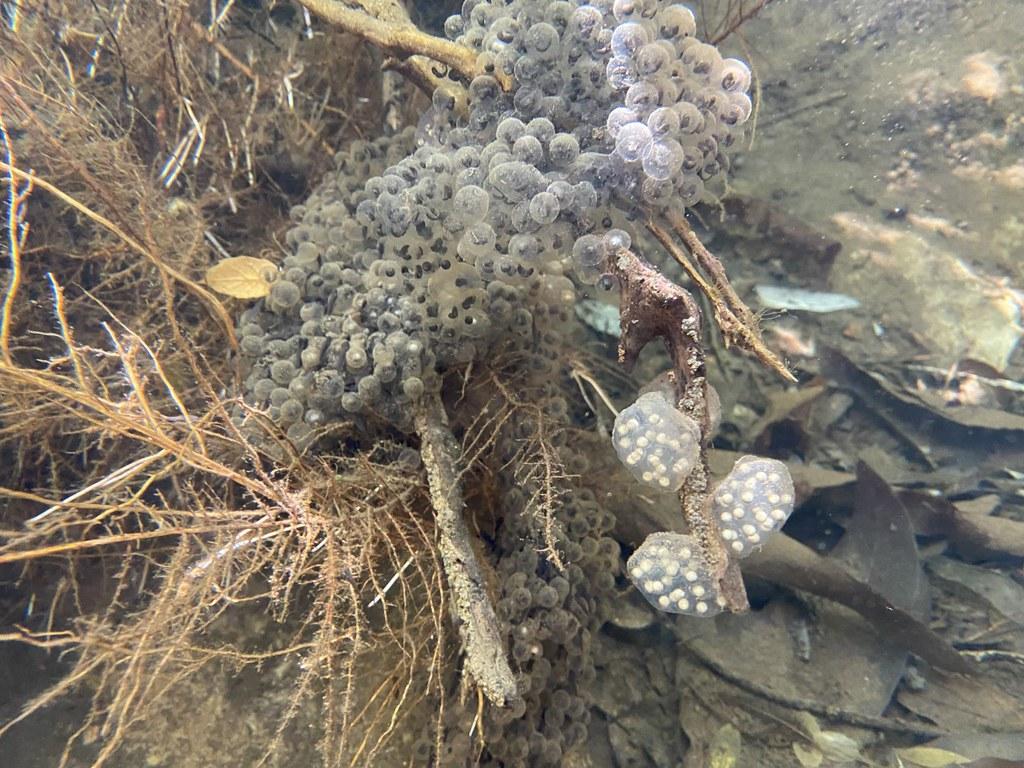
Two separate populations of California red-legged frogs have been reproducing in the Santa Monica Mountains/NPS
California red-legged frogs might be a threatened species, but those in the Santa Monica Mountains of California are proving to be a resilient species, as well. While the November 2018 Woolsey Fire swept across most of the Santa Monica Mountains National Recreation Area there, two separate populations of the frogs have been found breeding in the area burned by the fire.
According to park biologists, these sites have not had wild breeding red-legged frogs for perhaps 50 years
During recent stream surveys, researchers spotted three egg masses at one site in Los Angeles County. At a different Ventura County site, biologists found one female and one male frog and then, a week later, voila - a single egg mass. This was proof that the frogs were successfully breeding on their own. All egg masses have since successfully hatched.
"It was a welcome surprise," said Katy Delaney, an ecologist at Santa Monica Mountains National Recreation Area who has been leading the project for the last decade.
In 2014, NPS biologists set up two stream sites to reintroduce the species back into the Santa Monica Mountains. Two years later, egg masses were reintroduced into two additional stream sites. These are the two sites that are currently experiencing new activity.
A population discovered in the nearby Simi Hills has been used to replenish these four locations in the mountains. Translocated eggs were reared into tadpoles and released in the four streams. The idea was that translocated individuals would eventually mature, mate, and reproduce on their own.

Biologists were surprised to find egg masses in two different stream locations/NPS
The project was humming along before the Woolsey Fire in November 2018. Frogs were surviving in each of the four streams - from tadpoles to grown adults. The grown adults in the first two reintroduction sties had already begun breeding independently. For the two newer sites, it was still a bit too early for reproduction.
The wildfire was closely followed by catastrophic mudslides that wiped out much of the frog's habitat. The frogs require deep breeding pools of year-round water and foliage, which is not easy to find in the arid Santa Monica Mountains. Many streams were filled in with silt, mud, and debris.
Because frogs are picky about where they breed, Delaney had doubts about their future, and thus, the future of her project.
She wondered if this might be the end for these newly reestablished populations of nocturnal amphibians. However, she is pleased that the frogs proved more resilient than she initially thought.
"Here we are two years later, and the streams have recovered enough to create pools that the frogs must have liked," Delaney said.
The exception is one of the reintroduction sites that was introduced in 2014. The habitat is in poor shape, and very low numbers of frogs have been surveyed, according to the researchers. Frogs were breeding there prior to the Woolsey Fire, but they have not since.
Regardless, biologists see this latest development as a positive milestone for the project because now every reintroduction site has had successful wild breeding.
“This is one more step towards our goal of self-sustaining populations of these frogs in our region,” said Delaney.
Biologists are doing regular surveys for tadpoles. Later this summer, they will be on the lookout for froglets.
The last known record of California red-legged frogs in the Santa Monica Mountains was in the 1970s. As a result, they are listed as federally threatened under the Endangered Species Act and are a state Species of Special Concern.
Partners in the reintroduction project are California State Parks, the Mountains Recreation and Conservation Authority, the Santa Barbara Zoo, the Santa Monica Bay Restoration Commission, the Santa Monica Mountains Conservancy, California State Coastal Conservancy, the U.S. Fish and Wildlife Service, and the U.S. Geological Survey (USGS).



Add comment